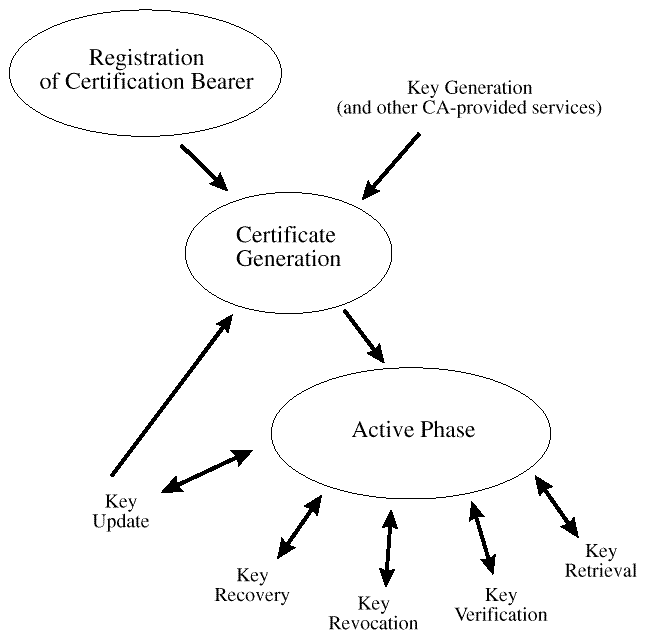

A CDSA add-in module is a dynamically-linkable library, composed of functions that implement some or all of the CSSM Module Interfaces. Add-in module functionality is partitioned into two areas:
Add-in modules provide one or more categories of security services to applications. The service categories are Cryptographic Service Provider (CSP) services, Trust Policy (TP) services, Authorization Computation (AC) services, Certificate Library (CL) services, and Data Storage Library (DL) services. Each security service contains one or more implementation instances, called sub-services. For a CSP service providing access to hardware tokens, a sub-service would represent a slot. For a CL service provider, a sub-service would represent a specific certificate format. These sub-services each support the module interface for their respective service categories.
This Part describes the module interface functions in the CL service category.
Each module, regardless of the security services it offers, has the same set of administrative responsibilities. Every module must expose functions that allow CSSM to indicate events such as module attach and detach. In addition, as part of the attach operation, every module must be able to verify its own integrity, verify the integrity of CSSM, and register with CSSM. Detailed information about add-in module structure, administration, and interfaces can be found in Part 9 of this Technical Standard.
The Certificate Library encapsulates format-specific knowledge into a library which an application can access via CSSM. These libraries allow applications and add-in modules to interact with Certificate Authorities and to use certificates and CRLs for services such as signing, verification, creation and revocation without requiring knowledge of the certificate and CRL formats.
CSSM defines the general security API that all certificate libraries should provide to manipulate certificates and certificate revocation lists. The basic areas of functionality include:
Each certificate library may implement some or all of these functions. The available functions are registered with CSSM when the module is attached. Each certificate library should be accompanied with documentation specifying supported functions, non-supported functions, and module-specific passthrough functions. It is the responsibility of the application developer to obtain and use this information when developing applications using a selected certificate library.
Certificate libraries manipulate memory-based objects only. The persistence of certificates, CRLs, and other security-related objects is an independent property of these objects. It is the responsibility of the application and/or the trust policy module to use data storage add-in modules to make objects persistent (if appropriate).
A certificate is a form of credential. Under current certificate models, such as X.509, SDSI, SPKI, and so on, a single certificate represents the identity of an entity and optionally associates authorizations with that entity. When a certificate is issued, the issuer includes a digital signature on the certificate. Verification of this signature is the mechanism used to establish trust in the identity and authorizations recorded in the certificate. Certificates can be signed by one or more other certificates. Root certificates are self-signed. The syntactic process of signing corresponds to establishing a trust relationship between the entities identified by the certificates.
The certificate life cycle is presented in
After registration, keying material is generated and a certificate is created. Once the private key material and public key certificate are issued to a user and backed up if appropriate, the active phase of the certificate management life cycle begins.
The active phase includes:

| Contents | Next section | Index |